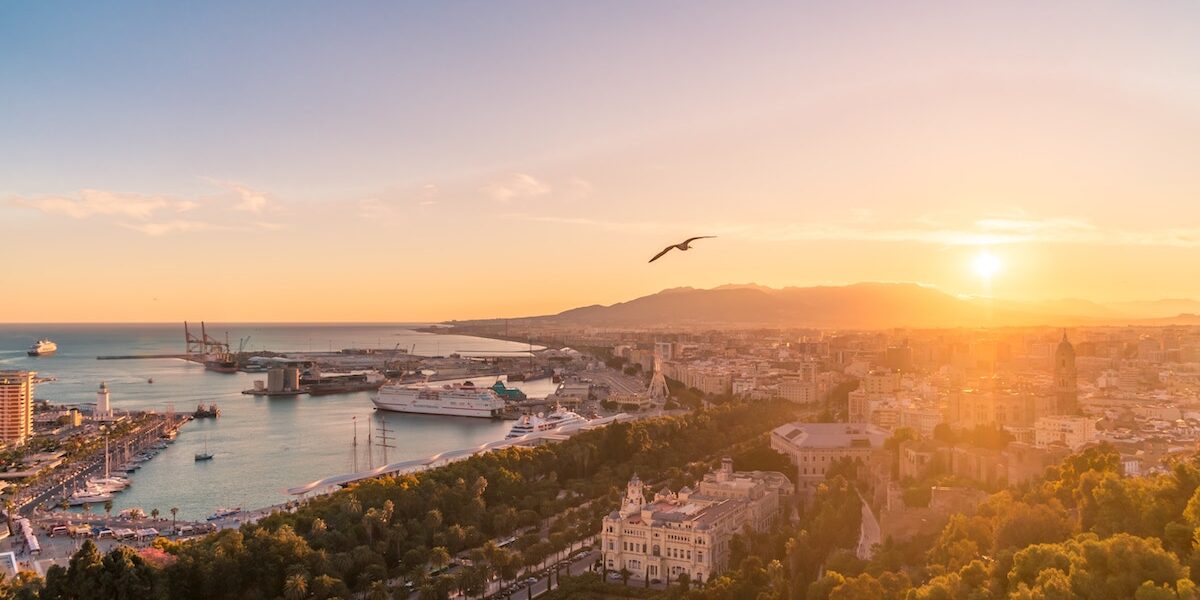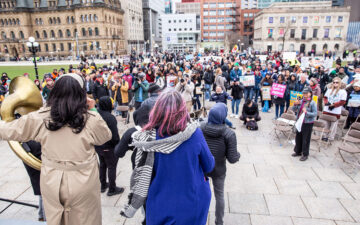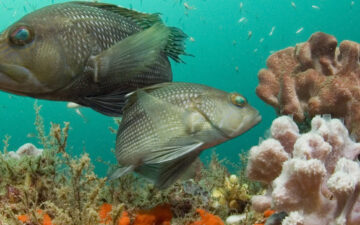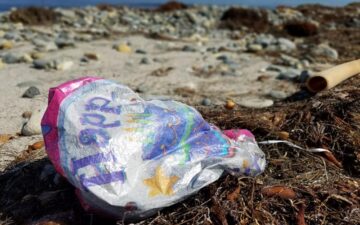By: Mark J. Spalding (The Ocean Foundation) and Shari Sant Plummer (Code Blue Foundation)
A version of this blog originally appeared on National Geographic’s Ocean Views.
We are writing after spending hectic days in Salamanca where Shari and I participated in Wild10, the 10th World Wilderness Congress themed “Making the World a Wilder Place”. Salamanca is a centuries-old Spanish city where walking the streets is a living history lesson. 2013 marks its 25th year as a UNESCO World Heritage Site. It was an amazing setting – a visible preservation of a long human legacy from the Roman bridge to the university that has been present for nearly 800 years. Present too is the legacy of the political efforts to control our wild seas and lands: Salamanca is less than an hour from where the World’s two super powers, Portugal and Spain, signed the 1494 Treaty of Tordesillas in which they divided the newly discovered lands outside Europe by literally drawing a line on the map of the Atlantic Ocean. Thus, it was also the perfect place to talk about a different kind of human legacy: The legacy of preserving the wild world where we can.
Over a thousand Wild10 attendees from diverse walks of life and institutions gathered to discuss the importance of wilderness. Panelists included scientists and government officials, NGO leaders and photographers. Our common interest was in the world’s last wild places and how best to ensure their protection now and in the future, especially given the many human-derived pressures on their health.
The Wild Seas and Waters track had several working meetings around marine issues including the Marine Wilderness collaborative workshop opened by Dr. Sylvia Earle. The work of the North American Intergovernmental Wilderness Protected Areas was presented, which defines Marine Wilderness and lays out objectives for protection and management of these areas. October 9 was crossover day with the Wild Speak track, which features communications in conservation sponsored by the International League of Conservation Photographers. Photographers working in the marine environment gave stunning visual presentations and panel discussions highlighted the use of media tools in international conservation.
We learned about efforts to protect fragile coral in the Cordelia Banks in Honduras that have met with success. After many years of effort by scientists and NGOs, the Government of Honduras protected this area just last week! The Wild Speak closing keynote by our colleague Robert Glenn Ketchum on the Pebble Mine in Alaska was inspiring. His many years of activism using his photography are paying off since most of the companies investing in this proposed destructive gold mine in a pristine wilderness area have now pulled out. It looks hopeful that this project will finally be stopped!
While there is a long-standing terrestrial bias in this annual gathering’s 1st decade, the 2013 focus of a series of 14 panels was our global marine wilderness—how to protect it, how to enforce the protections, and how to promote additional protections over time. There were over 50 panelists from 17 countries gathered to answer these and other ocean wilderness questions. It is exciting to see this emerging attention to the unique circumstance of ocean wilderness, involving international spaces outside individual government jurisdictions, and to the erosion of its unintentional protection due to its former inaccessibility.
Wild Speak featured “Wild Women” every day, in the field, and behind the scenes. Shari participated on several panels along with Sylvia Earle, Kathy Moran from National Geographic, Fay Crevosy from Wild Coast, Alison Barratt from the Khaled bin Sultan Living Ocean Foundation, and many others.
For us at The Ocean Foundation, it was an honor to have a number of our projects and people featured!
- Michael Stocker’s Ocean Conservation Research (on ocean noise pollution), and John Weller’s Last Ocean Project (seeking protection for the Ross Sea in Antarctica) where two fiscally sponsored projects.
- Grupo Tortuguero, and Future Ocean Alliance were two foreign charities for which we host “friends of” accounts at TOF.
- As noted above, our Advisory Board star, Sylvia Earle opened and closed the Wild Seas and Waters workshops, and gave the closing keynote for the entire Wild10 conference.
- Mark was honored to speak about our work with the Western Hemisphere Migratory Species Initiative, and the enforcement of marine protected areas.
- Mark was also able to meet new actors and reconnect with good friends and long time TOF colleagues including Fay Crevoshay, Serge Dedina, Exequiel Ezcurra, Karen Garrison, Asher Jay, Xavier Pastor, Buffy Redsecker, Linda Sheehan, Isabel Torres de Noronha, Dolores Wessen, Emily Young, and Doug Yurick
Next Steps
Thinking about Wild11, it would be great to design the meeting in a way that was not as divided into tracks for the ocean and for terrestrial wilderness, and thus allowed more direct sharing. If we can all learn from successes, share lessons and be inspired, the next conference can accomplish even more. We remain hopeful that it is also a week that lays the foundation for new protections for our wild ocean legacy.
One takeaway lesson from Wild10 is the amazing dedication of those who are working to preserve our global wilderness legacy. Another takeaway lesson is that climate change is affecting the plants, animals, and even the geography of even the most remote wilderness areas. Thus, it is impossible to discuss any of the wilderness protection issues without considering what is happening and what might still happen. And finally, there is hope and opportunity to be found—and that is what gets us all up in the morning.







